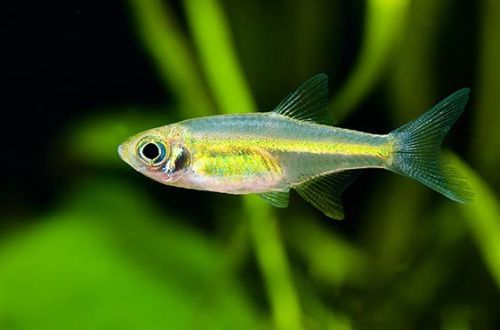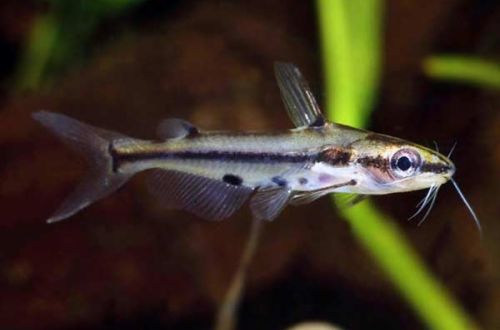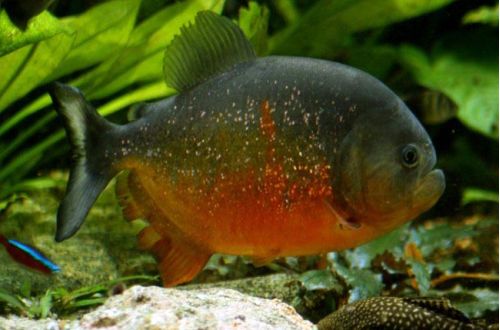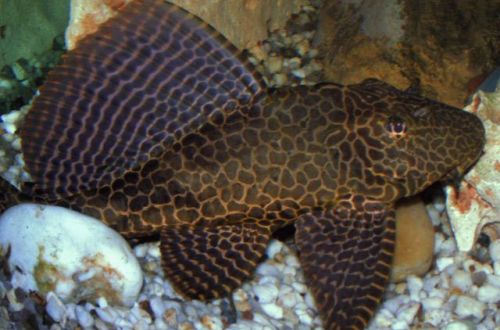
Microassortment of kubotai
Microrasbora kubotai, scientific name Microdevario kubotai, belongs to the Cyprinidae family. Named after the Thai biologist Katsuma Kubota. Other common names are Neon Green Rasbora, Rasbora Kubotai. However, despite the name, the fish belong to the Danio group. The change in classification occurred in 2009 after a series of studies on the DNA of these fish. Widespread in the aquarium hobby, unpretentious, considered easy to keep and breed. It has a high rate of compatibility with species of similar size.

Contents
Habitat
It comes from Southeast Asia from the territory of the southern provinces of Myanmar (Burma) and Thailand. The largest population of this species inhabits the lower basin of the Salween River (another name for Tanlain) and a number of other large rivers, such as the Ataran. Inhabits calm parts of rivers and streams with a moderate current. The natural habitat is characterized by clear water, sand and gravel substrates, leaf litter, driftwood and dense coastal vegetation.
Brief information:
- The volume of the aquarium – from 40 liters.
- Temperature – 20-27°C
- Value pH — 6.0–7.5
- Water hardness – 1–10 dGH
- Substrate type – any soft
- Lighting – subdued, moderate
- Brackish water – no
- Water movement – light or moderate
- The size of the fish is 1.5–2 cm.
- Feeding – any food of suitable size
- Temperament – peaceful
- Keeping in a group of 8-10 individuals
Description
Adults reach a length of about 2 cm. The color is silvery with a green tint. Fins are translucent. Sexual dimorphism is weakly expressed. There are no obvious differences between males and females.
Food
They accept most popular food in the aquarium trade in the right size. The daily diet may consist of dry flakes, granules, combined with live or frozen artemia, daphnia, bloodworm pieces.
Maintenance and care, arrangement of the aquarium
Recommended aquarium sizes for a small flock of 8-10 fish start at 40 liters. The design uses dark soil, various driftwood covered with aquatic mosses and ferns, and many plants placed along the side walls to leave free areas for swimming.
When keeping, it is important to maintain stable water conditions with suitable hydrochemical values. The aquarium requires regular maintenance. The number of mandatory procedures may differ, but at least a weekly replacement of part of the water (30–50% of the volume) with fresh water is carried out, organic waste (feed residues, excrement) is removed, pH and dGH values are monitored. Equally important is the installation of a productive filtration system.
Behavior and Compatibility
Peaceful schooling fish. They get along well with non-aggressive species of comparable size. They prefer to be in a flock of 8-10 individuals. Any large fish should be excluded from the neighborhood. Even calm vegetarians are able to accidentally eat such a small Kubotai Mikrorasbora.
Breeding / breeding
Successfully bred in home aquariums. During the spawning season, the fish randomly release many eggs among the thickets of plants. The incubation period lasts about 72 hours, after another 3-4 days the fry that have appeared begin to swim freely.
It is worth noting that the fish do not show parental care and, if necessary, will certainly eat their own offspring, therefore, in a confined space, together with adult fish, the survival rate of fry is minimal.
To preserve the fry, a separate tank is used, where the eggs are placed immediately after spawning and where they will be completely safe. You need to be prepared for the fact that many eggs will not be fertilized, but given their abundance, it is quite likely that several dozen fry will appear. They will be tiny in size and need microscopic food. If possible, infusoria should be fed in the first week, or specialized liquid or powdered food should be purchased. As they grow older, the food becomes larger, for example, Artemia nauplii or crushed dry flakes, granules.
A separate aquarium, where the fry are located, is equipped with a simple airlift filter and a heater. A separate light source is not required. Clearance is usually omitted for ease of maintenance.
Fish diseases
In a balanced aquarium ecosystem with species-specific conditions, diseases rarely occur. Often, diseases are caused by environmental degradation, contact with sick fish, and injuries. If this could not be avoided and the fish shows clear signs of illness, then medical treatment will be required. Read more about symptoms and treatments in the Aquarium Fish Diseases section.





